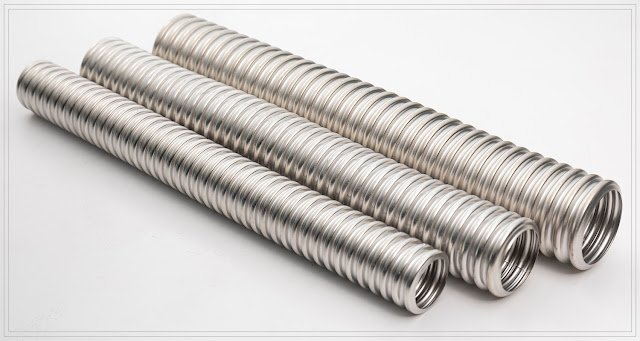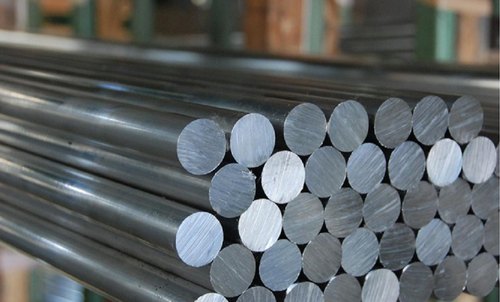Yield Strength
Yield strength of low-carbon steel is 250 MPa.
The yield point is the point on a stress-strain curve that indicates the limit of elastic behavior and the beginning plastic behavior. Yield strength or yield stress is the material property defined as the stress at which a material begins to deform plastically whereas yield point is the point where nonlinear (elastic + plastic) deformation begins. Prior to the yield point, the material will deform elastically and will return to its original shape when the applied stress is removed. Once the yield point is passed, some fraction of the deformation will be permanent and non-reversible. Some steels and other materials exhibit a behaviour termed a yield point phenomenon. Yield strengths vary from 35 MPa for a low-strength aluminum to greater than 1400 MPa for very high-strength steels.
Young’s Modulus of Elasticity
Young’s modulus of elasticity of low-carbon steel is 200 GPa.
The Young’s modulus of elasticity is the elastic modulus for tensile and compressive stress in the linear elasticity regime of a uniaxial deformation and is usually assessed by tensile tests. Up to a limiting stress, a body will be able to recover its dimensions on removal of the load. The applied stresses cause the atoms in a crystal to move from their equilibrium position. All the atoms are displaced the same amount and still maintain their relative geometry. When the stresses are removed, all the atoms return to their original positions and no permanent deformation occurs. According to the Hooke’s law, the stress is proportional to the strain (in the elastic region), and the slope is Young’s modulus. Young’s modulus is equal to the longitudinal stress divided by the strain.
Hardness of Carbon Steel
Brinell hardness of low-carbon steel is approximately 120 MPa.
In materials science, hardness is the ability to withstand surface indentation (localized plastic deformation) and scratching. Hardness is probably the most poorly defined material property because it may indicate resistance to scratching, resistance to abrasion, resistance to indentation or even resistance to shaping or localized plastic deformation. Hardness is important from an engineering standpoint because resistance to wear by either friction or erosion by steam, oil, and water generally increases with hardness.
Brinell hardness test is one of indentation hardness tests, that has been developed for hardness testing. In Brinell tests, a hard, spherical indenter is forced under a specific load into the surface of the metal to be tested. The typical test uses a 10 mm (0.39 in) diameter hardened steel ball as an indenter with a 3,000 kgf (29.42 kN; 6,614 lbf) force. The load is maintained constant for a specified time (between 10 and 30 s). For softer materials, a smaller force is used; for harder materials, a tungsten carbide ball is substituted for the steel ball.
The test provides numerical results to quantify the hardness of a material, which is expressed by the Brinell hardness number – HB. The Brinell hardness number is designated by the most commonly used test standards (ASTM E10-14[2] and ISO 6506–1:2005) as HBW (H from hardness, B from brinell and W from the material of the indenter, tungsten (wolfram) carbide). In former standards HB or HBS were used to refer to measurements made with steel indenters.
The Brinell hardness number (HB) is the load divided by the surface area of the indentation. The diameter of the impression is measured with a microscope with a superimposed scale. The Brinell hardness number is computed from the equation:
Uses of Carbon Steel
It has uses in many sectors. It basically divides in ultra-high carbon steel, high carbon steel, medium carbon steel, and low carbon steel. To begin with the ultra-high carbon one, we see that it is the hardest yet very delicate.
So we can’t cold work it. We use it for making the hard materials like blades, large machine parts, metal lamp posts, cutting tools, hot water radiators and more.
Next, the high carbon steel is quite tensile and is quite a popular type which serves various purposes. We use it in the making of cutting tools, punches, springs, high-strength wire, knives, drill bits and more.
Further, medium carbon steel is quite easy to machine. People add small amounts of silicon to it along with manganese to enhance the quality of this steel.
It is also referred to as the mild steel and used in the structure of buildings and bridges. Moreover, you can find it in gears, pipelines, fridges, cars and more.
Finally, the low one is generally rolled out in sheets and strips. We use it for shipbuilding, vehicle bodies, domestic appliances, wire and more. Moreover, we also use it in gates, fencing, railings and more.
Advantages and Disadvantages
It has a lot of advantages. The carbon present in it is responsible for giving it the hardness and strength when we compare it to the other hard materials.
Moreover, the flexibility of this steel is a reason why manufacturers prefer it for press machinery and more.
On the other hand, it is also a few drawbacks. It is quite difficult to weld which poses a great challenge to the manufacturers’.
Similarly, while it’s hardness makes it preferable for cutting tools it also makes it vulnerable to breaking. When we compare it to other speciality steels, it does not hold up that much.
Top Links Of Carbon Steel
https://www.philipsmetal.com/carbonsteel-pipe-type-a106-grade-b-carbonsteel-seamless-pipe.html
https://www.philipsmetal.com/carbonsteel-pipe-type-a106-grade-a-carbonsteel-seamless-pipe.html
https://www.philipsmetal.com/carbonsteel-pipe-type-a106-grade-c-carbonsteel-seamless-pipe.html
https://www.philipsmetal.com/carbonsteel-pipe-type-a53-gr-b-carbonsteel-seamless-pipe.html
https://www.philipsmetal.com/carbonsteel-pipe-type-a333-gr-6-carbonsteel-seamless-pipe.html
https://www.philipsmetal.com/pipe-astm-a671-grade-cc60-cc65-cc70-lsawpipe-sawpipe-efwpipe.html
https://www.philipsmetal.com/pipe-astm-a672-grade-c60-c65-c70-lsawpipe-sawpipe-efwpipe.html
https://www.philipsmetal.com/carbonsteel-pipe-type-a500-carbonsteel-seamless-pipe.html
https://www.philipsmetal.com/carbonsteel-pipe-type-a252-carbonsteel-seamless-pipe.html
https://www.philipsmetal.com/api-pipe-type-api-5l-grade-b-carbonsteel-seamless-pipe.html
https://www.philipsmetal.com/api-pipe-type-api-5l-x42-psl1-carbonsteel-seamless-pipe.html
https://www.philipsmetal.com/api-pipe-type-api-5l-x42-psl2-carbonsteel-seamless-pipe.html
https://www.philipsmetal.com/api-pipe-type-api-5l-x46-psl1-carbonsteel-seamless-pipe.html
https://www.philipsmetal.com/api-pipe-type-api-5l-x46-psl2-carbonsteel-seamless-pipe.html
https://www.philipsmetal.com/api-pipe-type-api-5l-x52-psl1-carbonsteel-seamless-pipe.html
https://www.philipsmetal.com/api-pipe-type-api-5l-x52-psl2-carbonsteel-seamless-pipe.html
https://www.philipsmetal.com/api-pipe-type-api-5l-x56-psl1-carbonsteel-seamless-pipe.html
https://www.philipsmetal.com/api-pipe-type-api-5l-x56-psl2-carbonsteel-seamless-pipe.html
https://www.philipsmetal.com/api-pipe-type-api5l-grade-b-carbon-steel-erw-pipe.html





Comments
Post a Comment